 Image search results - "kamakura" Image search results - "kamakura" |

Exterior of Great Buddha, Kamakura
|
|
|

Daibutsu Great Buddha, Kamakura
|
|

Great Buddha, Kamakura
|
|

Daibutsu Great Buddha, Kamakura
|
|

Daibutsu Great Buddha, Kamakura
|
|
|

Offerrings to the Daibutsu.
|
|

Inside the Great Buddha (head portion)
|
|
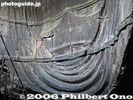
Inside the Great Buddha (hands and lap)
|
|

Kamakura souvenir shop.
|
|

Enoshima Station
|
|
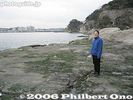
Hiking around the island (not recommended). There is a nice path going around half the island. But the other half lacks a real path. It is somewhat risky.
|
|
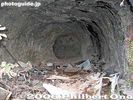
Cave at Enoshima
|
|
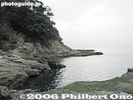
Other side of the island
|
|
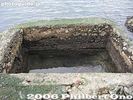
Fishing hole
|
|
|
|
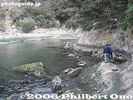
Rough trail
|
|
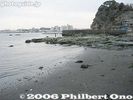
Finally back to civilization
|
|

Passing Enoshima Station
|
|

Passing by Ryukoji Temple
|
|

Mikoshi face-offThe shrine from Yasaka Shrine on Enoshima is the male (left), and the mikoshi from Koyurugi Shrine (foreground) is female.
|
|

Tram breakPart of the procession route also happened to be the Enoden streetcar route so we had to make way for the passing streetcar every 15 min. or so. There were streetcar personnel who blew their loud whistles whenever a streetcar was to pass through. I got scolded for sticking out my head to take this shot.
|
|
|

Streetcar break
|
|

Entrance to Koyurugi ShrineIt is dedicated to the sea goddess.
|
|

Secondary shrines
|
|

Koyurugi Shrine lookoutThe shrine is built atop a cliff overlooking the ocean, and there's small lookout offering sweeping view with Enoshima in the distance.
|
|

Koyurugi Shrine
|
|

Parading along a shopping street
|
|
|

KnockersWhen they carry the mikoshi, a pair of knockers on both sides the mikoshi are struck to make a rhythmic sound.
|
|

Kita-Kamakura Station on the JR Yokosuka Line. The train platform is still too small for the hordes of tourists that arrive.
|
|

Hint of what's to come. Hydrangeas on the way to Meigetsu-in.
|
|
|

Entrance (left) to Meigetsu-in. Exit is on the right.
|
|
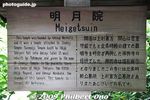
About Meigetsu-in temple. Meigetsu means "bright moon."
|
|
|
|

One ticket booth to Meigetsu-in.
|
|
|
|
|

The main drag to Meigetsu-in temple's Hondo hall is lined with ajisai.
|
|

It's an incredible path of hydrangea.
|
|

During the first half of June, the temple sees its most visitors.
|
|
|
|

Nicknamed the Hydrangea Temple (Ajisai-dera), Meigetsu-in must have one of Japan's highest concentration of ajisai within its grounds.
|
|
|
|

A gate at the end of the main path to the temple hall.
|
|

Meigetsu-in's Hondo hall. The temple belongs to the Rinzai Zen Buddhist sect.
|
|

Inside the Hondo hall.
|
|

Another room in the temple has this famous round opening facing a garden.
|
|

Meigetsu-in's famous round window/door.
|
|

Meigetsu-in garden
|
|

Meigetsu-in's garden is also open to the public in early June when irises are in bloom.
|
|

Karesansui garden
|
|

Soyu-do Founder's Hall
|
|

Inside Soyu-do.
|
|

About Soyu-do.
|
|

Adjacent to the Soyu-do.
|
|

Kame-no-i Well (Jug Well)
|
|

About Kame-no-i Well
|
|
|

Meigetsu-in Yagura cavern.
|
|

Meigetsu-in Yagura cave.
|
|

Meigetsu-in Yagura cave.
|
|

About Meigetsu-in Yagura cave.
|
|
|
|
|
|
|
|
|
|
|
|

The temple also has a small bamboo forest.
|
|

Benzaiten
|
|
|
|
|
|

Grave of Hojo Tokiyori.
|
|

About the Grave of Hojo Tokiyori.
|
|

Tea house where you can buy tea or soft drinks.
|
|
|
|

Exit path
|
|
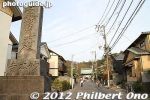
Myohonji is a Nichiren Buddhist temple founded in 1260. Site was formerly the estate of the Hiki Yoshikazu, a senior retainer of Minamoto Yoritomo. The temple grounds is noted for cherry blossoms and other flowers.
|
|
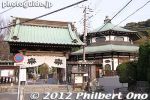
Somon Gate. 10-min. walk from Kamakura Station.
|
|

About Myohonji temple.
|
|

Map of Myohonji temple.
|
|

Nitenmon Gate at Myohonji temple, Kamakura.
|
|
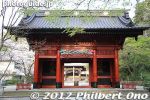
Nitenmon Gate at Myohonji temple, Kamakura.
|
|
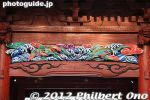
Nitenmon Gate at Myohonji temple, Kamakura.
|
|
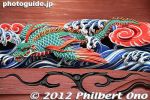
Carving on Nitenmon Gate at Myohonji temple, Kamakura.
|
|
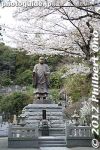
Statue of Nichiren.
|
|
|
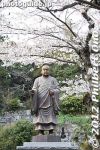
Statue of Nichiren under cherry blossoms at Myohonji temple, Kamakura.
|
|
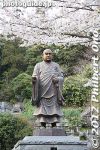
Statue of Nichiren under cherry blossoms at Myohonji temple, Kamakura.
|
|
|
|
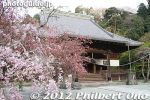
Soshido Hall at Myohonji temple, Kamakura.
|
|
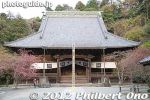
Soshido Hall at Myohonji temple, Kamakura. Temple's main hall. 祖師堂
|
|
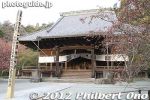
Soshido Hall at Myohonji temple, Kamakura. 祖師堂
|
|
|
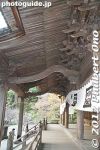
Soshido Hall at Myohonji temple, Kamakura. 祖師堂
|
|
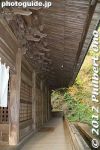
Side of Soshido Hall at Myohonji temple, Kamakura. 祖師堂f
|
|
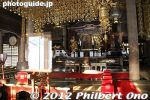
Inside Soshido Hall.
|
|
|
|
|
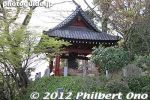
Temple bell
|
|
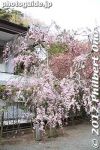
Weeping cherry tree at Myohonji temple.
|
|
|
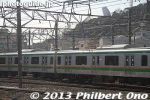
Ofuna Kannon temple's giant, white Kannon statue is visible from the train at JR Ofuna Station.
|
|
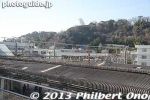
This Kannon statue happens to be one of my childhood memories of Japan when I visited from Hawaii. From the tour bus to Kamakura, I remember the tour guide pointing out the statue from our bus and I was impressed.
|
|
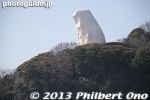
If you visit Kamakura, you will likely see this giant white Kannon statue at Ofuna on the fringe of Kamakura. I've passed through Ofuna Station many times, but never got out of the station until this day.
|
|
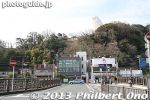
Ofuna Kannon temple's giant, white Kannon statue is visible from JR Ofuna Station. I finally decided to visit this temple.
|
|
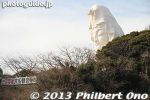
Ofuna Kannon temple's giant, white Kannon statue is well placed and designed to be visible from the best vantage points.
|
|
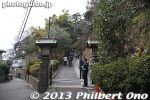
Ofuna Kannon temple is a short walk from JR Ofuna Station. There's a slight sloping path up a low hill.
|
|

About the Ofuna Kannon temple. Since it was established in the modern era and located on the fringe of Kamakura at Ofuna, it is out of Kamakura's central loop of historic temples and not really visited by tourists.
|
|

Ofuna Kannon temple's Setsubun poster showing Kazue Ito (who was absent) and Jaguar Yokota. Ofuna Kannon temple held its Setsubun Festival on Feb. 1, 2013. This is earlier than the normal date of Feb. 3.
|
|
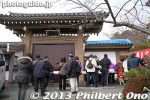
Gate to Ofuna Kannon temple. Admission of 300 yen is charged, and we got a bag of beans and a little door prize.
|
|
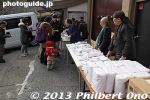
Bags of beans and door prizes at the entrance of Ofuna Kannon temple.
|
|
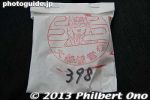
My bag of beans with a lottery number for prizes.
|
|
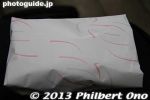
Door prize.
|
|
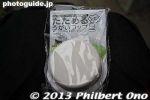
My door prize was a collapsible cup.
|
|
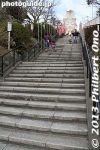
These steps go up to the giant, white Kannon statue.
|
|
|
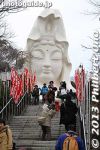
Ofuna Kannon temple, Kamakura, Kanagawa.
|
|
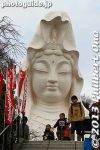
The Ofuna Kannon statue is 25 meters high, made of reinforced concrete. It was completed in 1960. Stones from Hiroshima and Nagasaki are embedded in the statue.
|
|
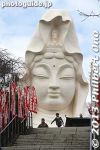
Again, it's amazing how they placed the statue here. Another prime vantage point.
|
|
|
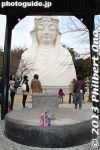
Incense burner and giant Kannon statue.
|
|
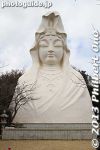
Ofuna Kannon temple's giant, white Kannon statue. For a long time, since I only saw the head sticking out of the hill, I assumed that it was a reclining buddha.
|
|
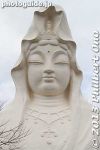
Closeup of Ofuna Kannon temple's giant, white Kannon statue.
|
|
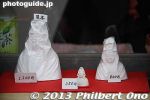
Miniature Kannon statues for sale.
|
|
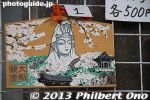
Kannon votive tablet
|
|
|
|
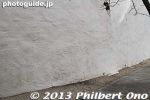
Base of the Kannon statue.
|
|
|
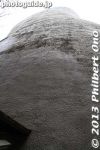
Back of the Kannon statue.
|
|
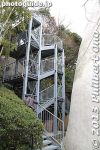
A staircase behind the Kannon statue.
|
|
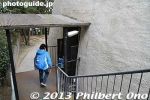
You can enter the Kannon statue in the rear.
|
|
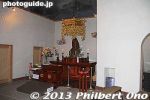
Inside the Ofuna Kannon statue. There's only one room and you cannot go up the statue.
|
|
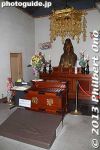
Inside the Kannon statue is a Kannon altar.
|
|
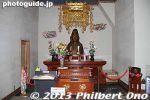
Inside the Kannon statue is a Kannon altar.
|
|
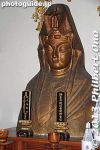
Inside the Kannon statue is a Kannon altar.
|
|
|
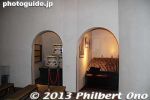
Smaller chambers inside the Kannon statue.
|
|
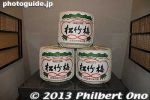
One chamber has barrels of sake,
|
|
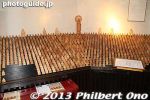
Another chamber has small wooden Kannon statues.
|
|
|
|
|
|

How the Kannon statue looked before renovations.
|
|
|
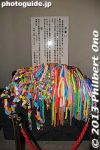
Another chamber with origami cranes.
|
|
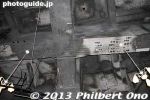
Ceiling of the room inside the Kannon statue made of concrete.
|
|
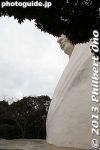
You can walk completely around the statue.
|
|
|
|
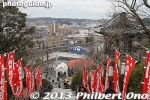
Stairs going down from the Kannon statue.
|
|
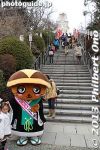
A tanuki raccoon dog mascot named Hachi-chan from Hachioji dressed as a Buddhist priest.
|
|
|
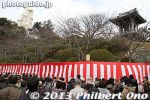
Again, the Kannon statue is in view. Very well placed.
|
|
|
|
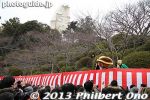
Hachi-chan from Hachioji arrives first.
|
|
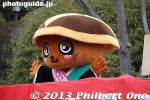
Hachi-chan from Hachioji, a tanuki raccoon dog dressed as a Buddhist priest. 八ちゃん
|
|
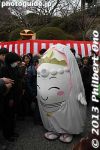
Another mascot, named Non-chan ノンちゃん is from Ofuna and looks like a Kannon.
|
|
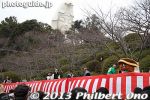
Other bean throwers arrive on the deck.
|
|
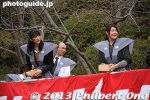
Former Japanese Olympic volleyball players.
|
|
|
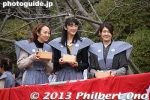
Former Japanese Olympic volleyball players.
|
|
|
|
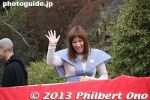
The most famous was Jaguar Yokota, a woman pro wrestler. At Ofuna Kannon temple's Setsubun Festival on Feb. 1, 2013. ジャガー横田
|
|
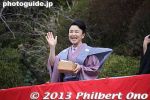
Actress Michiko Godai.
|
|
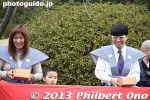
Jaguar Yokota, her son, and husband.
|
|
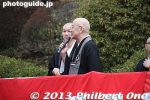
Ofuna Kannon temple priest.
|
|
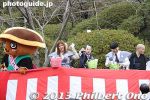
Bean throwing begins at around 1 pm.
|
|
|
|
|
|
|
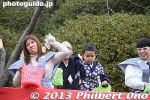
Jaguar Yokota, her son, and husband throwing beans for Setsubun at Ofuna Kannon temple, Kamakura, Kanagawa.
|
|
|
|
|
|
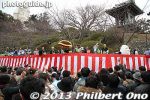
Ofuna Kannon temple Setsubun Festival on Feb. 1, 2013, Kamakura.
|
|
|
|
|
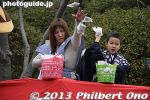
Jaguar Yokota and her son tos bags of beans or Setsubun.
|
|
|
|
|
|
|
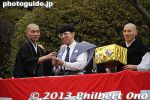
After the bean throwing, they had a drawing for prizes. We all had a numbered bag of beans given to us when we entered the temple. They called out the lucky numbers pulled out of a box by the bean throwers.
|
|
|
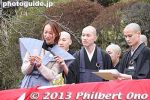
And the winner is number...
|
|
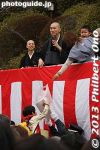
The drawing winners received an autographed placard and a prize. The grand prize was a robot vaccum cleaner from Sharp.
|
|
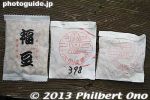
I scored two bags of beans. The one in the middle with the drawing number was given to me when I entered the temple.
|
|
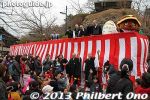
Afterward, they held something for the kids.
|
|
|
|

My Youtube video of this Ofuna Kannon Setsubun bean throwing festival on Feb. 1, 2013.
|
|
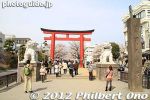
Torii on the Dankazura path to Tsurugaoka Hachimangu Shrine.
|
|
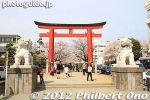
Dankazura path to Tsurugaoka Hachimangu Shrine.
|
|
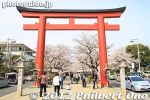
Dankazura path to Tsurugaoka Hachimangu Shrine.
|
|
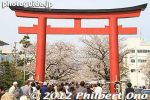
Dankazura path to Tsurugaoka Hachimangu Shrine.
|
|
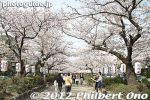
Dankazura path to Tsurugaoka Hachimangu Shrine is lined with many cherry trees which bloom in April (later than in Tokyo).
|
|
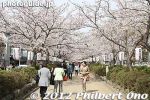
Cherry trees along the Dankazura path to Tsurugaoka Hachimangu Shrine.
|
|
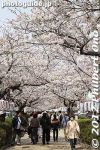
Cherry trees along the Dankazura path to Tsurugaoka Hachimangu Shrine.
|
|
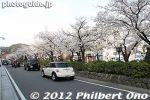
The Dankazura path to Tsurugaoka Hachimangu Shrine is in the middle of the busy Wakamiya Oji street.
|
|
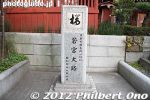
Marker indicating that Wakamiya Oji is one of Japan's 100 Famous Cherry Blossom Spots.
|
|

Another torii
|
|
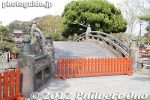
Arched bridge closed to the public.
|
|

Path to Tsurugaoka Hachimangu Shrine.
|
|
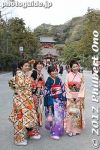
A few kimono ladies on their way to worship at Tsurugaoka Hachimangu Shrine, Kamakura.
|
|
|
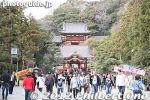
Tsurugaoka Hachimangu Shrine straight ahead.
|
|
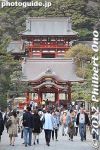
In the forefront is the Maiden sacred dance stage and the rear is the Hongu main worship hall.
|
|
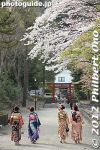
Kimono ladies and cherry blossoms.
|
|
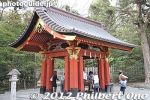
Fountain to cleanse yourself.
|
|
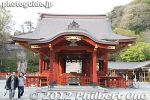
Mai-den sacred dance stage front view. 舞殿
|
|
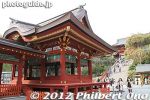
Mai-den sacred dance stage.
|
|
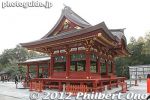
Mai-den sacred dance stage.
|
|
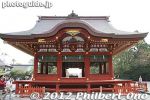
Mai-den sacred dance stage facing the Hongu. 舞殿
|
|
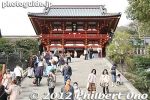
Stone steps going up to the Hongu main worship hall. 大石段
|
|
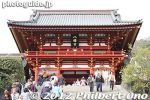
Gate to the Hongu.
|
|
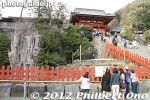
Next to the Stone Steps was a giant gingko tree which fell in a storm in 2010.
|
|
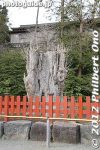
Only a tree stump remains of the gingko tree.giant gingko tree which fell in a storm in 2010.
|
|

About the fallen gingko tree.
|
|
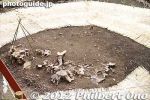
The original tree might still grow.
|
|
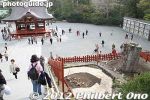
Spot where the gingko tree was.
|
|
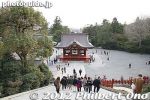
View of the Maiden from the Stone Steps.
|
|
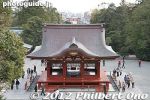
Maiden sacred dance stage.
|
|
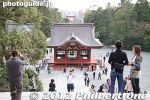
View from the top of the Stone Steps.
|
|
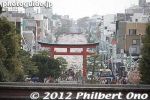
Dankazura path as seen from the top of the Stone Steps.
|
|
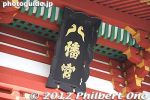
Hachimangu sing
|
|
|
|
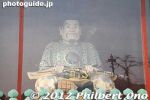
Statue in the gate.
|
|
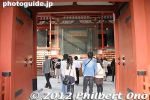
Hongu main hall.
|
|
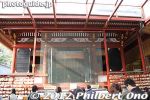
Hongu main worship hall at Tsurugaoka Hachimangu Shrine. The left side of the Hongu is a small museum. 本宮
|
|
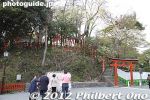
On the left of the Hongu is Maruyama Inari Shrine.
|
|
|
|
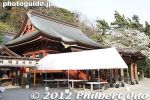
Wakamiya Shrine, the shrine's only building that is an Important Cultural Property.
|
|
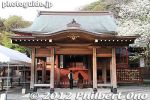
Wakamiya Shrine, Tsurugaoka Hachimangu Shrine's only building that is an Important Cultural Property. 若宮
|
|
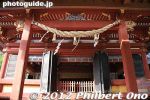
Wakamiya Shrine, Tsurugaoka Hachimangu Shrine's only building that is an Important Cultural Property. 若宮
|
|
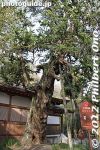
Tree planted in 1963, one of Kamakura's Natural Monuments.
|
|
|
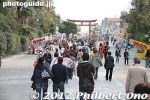
Path leaving the shrine.
|
|

Map of Tsurugaoka Hachimangu Shrine.
|
|
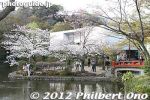
Genpei Pond in a Japanese garden full of cherry blossoms.
|
|
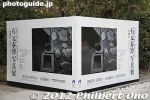
Museum of Modern Art, Kamakura
|
|
|
|